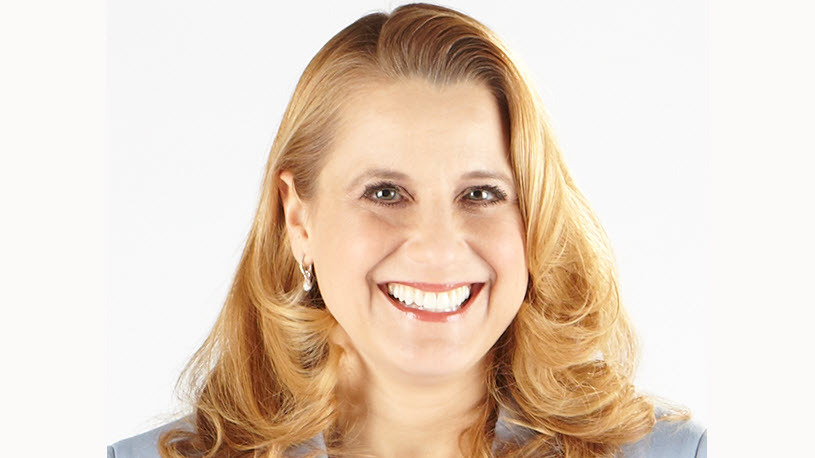EVP of HR at Reynolds Consumer Products Talks Diversity, Pay Equity, Pay Transparency
Part of a series | Women's History Month Series

Celebrate Women's History Month throughout 2024 with Valerie Richards, executive vice president of HR at Reynolds Consumer Products.
Facing the unrest of the early 2020s, Valerie Richards took action.
"Employees came to me and said, 'This is impacting me, my family and how I'm doing my work,'" she says. "It opened my eyes. I said, 'We need to do something about this. We need to start our diversity, equity and inclusion journey.'"
Hiring women engineers
Valerie Richards is executive vice president of HR at Reynolds Consumer Products, home to Reynolds Wrap® aluminum foil, Hefty® trash bags and other household staples. She and her team have built the HR function from the ground up, creating a better recruitment experience and launching Reynolds' diversity, equity and inclusion (DE&I) program. Part of that program involves boosting the diversity of Reynolds' engineering workforce.
"A few years back, we started our engineering development program to increase diversity," she says. "While the program is open to all genders and ethnic backgrounds, it ended up that all the people who accepted positions extending beyond the rotational segment of the program were all women. I'm so proud of them. They're still at our company."
Valerie's work doesn't stop at helping candidates receive equitable hiring opportunities. It progresses with pay equity, one of Valerie's top priorities and a priority of hers long before Reynolds had a DE&I program.
Pay equity: A familiar story
Valerie takes pride in improving pay equity at Reynolds, having been a proponent of the concept for years.
"It's so important, especially as you do studies and discover where you can improve," she says.
Like many women, Valerie has been personally impacted by pay inequity.
"It's disheartening," she says. "Earlier in my career, I was working on pay for a colleague hire, and my boss said, 'He has a family to provide for.' I thought, 'I also have a family to provide for.' My boss didn't mean it disrespectfully or as a slight against women. It was an unconscious bias, and it struck me. I thought, 'That's not right. Women have families to support. We have outside commitments, too. If someone's doing the same work, it shouldn't matter.'"
Pay equity and pay transparency: Working with leadership
Later, as an HR professional at Reynolds, Valerie started digging into the company's pay equity state, identifying a woman moving into a higher-level operations role. Valerie was stunned when she compared the woman's pay to that of her male counterparts.
"I said, 'Wow, there's a huge disparity here. That's not right,'" Valerie says. "I went to my boss, gave him the compensation and told him what I was recommending. I said, 'She is doing the same role.' He said, 'Yeah, you're right.'"
Valerie knows that not all leaders are eager to embrace pay equity, due to cost and – now with pay transparency gaining ground – fear of conflict. In the case of resistance or hesitation, Valerie recommends employing recognition, realism and empathy.
"Acknowledge their fears and concerns," she says. "You can also say, 'Pay transparency and pay equity are here. That's reality, whether we like it or not.' You have to advise leadership as a trusted advisor. You can pull the articles and say, 'This is what's happening.'"
She adds, "I can't in good conscience go to Sonia and say, 'Jose is really good, and that's why he's making $25,000 more than you.' When talking to leadership, it helps to flip it around: 'Would you feel comfortable going to Sonia, looking her in the eye and supporting the gap in her pay? If Sonia comes to you, can you comfortably explain it?'"
Pay equity or pay transparency: Which should come first?
Pay equity or pay transparency: Which should come first? For Valerie, it's pay equity.
"What we didn't want was to have pay transparency first," Valerie says. "We wanted to ensure our ranges were tight so everybody felt comfortable when we introduced pay transparency."
If pay equity is adopted first, pay transparency may not initially expose any disparities in pay. Over time, however, pay transparency can reveal gaps as they are introduced, becoming a corrective mechanism for pay inequity. If pay transparency is adopted first, introducing pay equity may be more challenging as equitable and inequitable pay will have been disclosed to all. In that case, be ready for the workforce impact.
"Do your review, do your studies and put a plan together," Valerie says. "If you find gaps, no one's saying you have to make big changes that will cost the company $1 million tomorrow. What's the plan? Communicate it to people. If you don't say anything, people may assume the worst. Be open, be honest and have a plan."
Later this year, Valerie plans to roll out pay transparency webinars at Reynolds to stimulate conversation about what it is and what it means for the company.
Learn more about responding to pay transparency
Beyond pay: Gen Z and HR complexity
In addition to pay equity and pay transparency, Valerie is trying to support different generations in the workplace, including Generation Z. She brought in an expert in workforce demographics to help.
"Different generations have different needs and desires," Valerie says, "and what you find with younger generations is that they want flexibility and more options. Working in a hybrid, flexible model is an example, but employees can also benefit from being in the office at least part of the time for collaboration, training and mentoring. Granting flexibility and providing offerings all generations can benefit from, such as paid parental leave, tuition reimbursement and shift swaps, are both worth considering."
Generational differences in the workplace are one of many examples of increasing HR complexity, evidenced as well by developments in pay transparency and pay equity. Valerie's at the heart of this complexity, and her heart goes out to HR leaders everywhere.
"Think about the changing regulations, from pay transparency to the National Labor Relations Board (NLRB) and everything in between," Valerie says. "There's so much complexity in HR today. It's evolving as work and technology become more complex. We need to have a high appreciation for HR's work."
Simplifying complexity with ADP
Simplifying Valerie's complex job every day is ADP Vantage HCM®, an HR and payroll solution for large multinational businesses based in the United States. ADP helps Valerie and her team save time, reduce errors, boost productivity, manage costs and simplify compliance and benefits administration. Additionally, ADP's pay equity storyboards help Valerie and her team get a quick snapshot of pay equity at Reynolds.
The care that Valerie and her team receive is a key reason Valerie chooses ADP.
"I've always been impressed with ADP's focus on the client," Valerie says. "They do quarterly voice-of-the-client meetings. In our early meetings, I remember saying I needed things, and they were always open to listening and putting things in the pipeline. I've always appreciated ADP's client focus."
Learn more about ADP:
- Discover ADP Vantage HCM
- Discover ADP DataCloud, with pay equity storyboards
- Explore ADP's large-business offerings
- Explore ADP's offerings for all business sizes
Where to find Reynolds Consumer Products:
- Reynolds Consumer Products [Business website]
- Reynolds Consumer Products [LinkedIn]
- Reynolds Brands [Facebook]
- Reynolds Brands [Instagram]
- Reynolds Brands [Pinterest]



